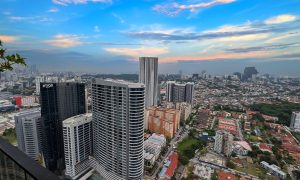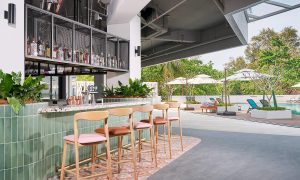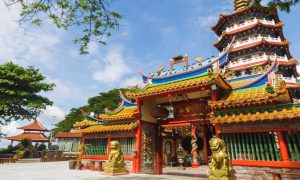Malaysia is now aiming to excel in the medical tourism industry due to the industry’s high potential in generating a large amount of revenue that will positively contribute to the country’s economy. This is especially true now that there is a high demand for good quality medical services for a lower cost. Patients, especially those who come from developed Western countries like the US are looking for low cost medical sites that not only offer medical services but also boast tourist attractions.
Malaysia Healthcare Travel Council, a corporatized agency funded by the Malaysian government, has been taking proactive measures to promote Malaysia as a preferred medical tourism destination since 2011. The agency has participated in a number of international travel and tourism shows worldwide, in conjunction with Tourism Malaysia, as part of their effort to put Malaysia in the forefront of healthcare travel.
According to Dr. Mary Wong, the chief executive of the agency, the medical tourism industry is “bound to grow tremendously” especially due to factors such as rising healthcare costs, heightened health awareness and better information available in developed countries about treatment options.
“Many patients in western countries have to wait before they are even examined by the medical care facilities. As you can imagine, this can be fatal if there is any terminal illness involved,” she explained when she was interviewed by Bernama at the ongoing three-day New York Times Travel Show (NYTTS).
“We can provide good, almost immediate care. We have drastically cut down waiting time for patients,” she added.
As an effort to promote healthcare tourism in Malaysia at the NYTTS, Wong presented a book at a seminar, entitled “Patients Beyond Borders” by Josef Woodmann. The book has proven to be a valuable source of information for those who want to obtain information on the facilities and contacts for tests/treatments available in Malaysia.
Although Malaysia is highly commended for its modern, high quality healthcare facilities and infrastructure, some medical experts doubt that there is sufficient medical expertise available in the country.
In response to this, Wong said, “We have adequate number of doctors to support our healthcare system. Indeed, we have 5,000 new well-trained medical graduates each year.”
“Besides, our medical force gets an additional 1,000 specialised medical experts each year. Indeed, we are trying to target one doctor for a population of 400 people,” she added.
Wong also added that the health tourism industry will contribute largely to Malaysia’s economy. She quoted that in 2012, the industry generated a total of RM594 million in terms of revenue.
“In 2013, the revenue is estimated to reach RM688 million, according to tentative estimates,” she added.
For those who are traveling for health reasons, Malaysia offers both good quality, low-cost healthcare and tourist attractions creating a unique package. Apart from undergoing medical checks while in Malaysia, tourists can also make use of facilities concerning preventive wellness, spas, cosmetic and dental surgery, etc.
While Singapore was once a force to reckon with in the medical tourism industry, the industry is now falling apart due to rising costs. The emergence of fierce competition from countries such as Malaysia is also another factor, especially when you take into account the lower hospitalization and medical costs in these countries.
Even five-star accomodation are much cheaper in Malaysia. Wong also noted that another plus side for tourists planning to come to Malaysia for treatment is the fact that it is an English-speaking nation. Thus, there will be no communication difficulties involved when it comes to tourists sharing their concerns with Malaysian doctors and healthcare staff.
When asked why Malaysia was so late to tackle the medical tourism industry, Wong replied that her organization was the main catalyst for Malaysia’s big stride in the medical tourism sector. Since her organization was only formed a few years back, efforts to push for the medical tourism sector were only implemented in 2011.
“But because of our unique advantages, both governments and patients in developed countries will, invariably, appreciate our cost and other advantages,” she added.
The top ten foreign nationalities who came to Malaysia to seek medical treatment in 2012 were Indonesia (375,499), India (22,350), Japan (17,775), China (15,407), United Kingdom (13,366), US (12,158), Libya (11,872), Bangladesh (11,594), Australia (10,369) and Nepal (10,031).
Some of the popular treatments sought in Malaysia include cardiology, oncology, orthopaedic, obstetrics and gynaecology, urology, otolaryngology, gastroenterology, reconstructive surgery, health screening and second opinion.
A booth representing Malaysia was opened at the NYTTS by Tourism Malaysia’s New York Office. The travel show acted as a platform for different countries around the world to promote their tourism attributes to the American market. The show was a colourful display of different cultures as a result of the various cultural and culinary presentations carried out, luring throngs of American visitors.
Ahmad Johanif Mohd, the vice-president of Tourism Malaysia’s New York Office, told Bernama that he believed there was “great interest” among the Americans which was evident through the number of inquisitive visitors who not only came to watch the Malaysian cultural dances but also approached the Malaysia booth to seek for information on the country.
Story and quote from: The New Straits Times






















